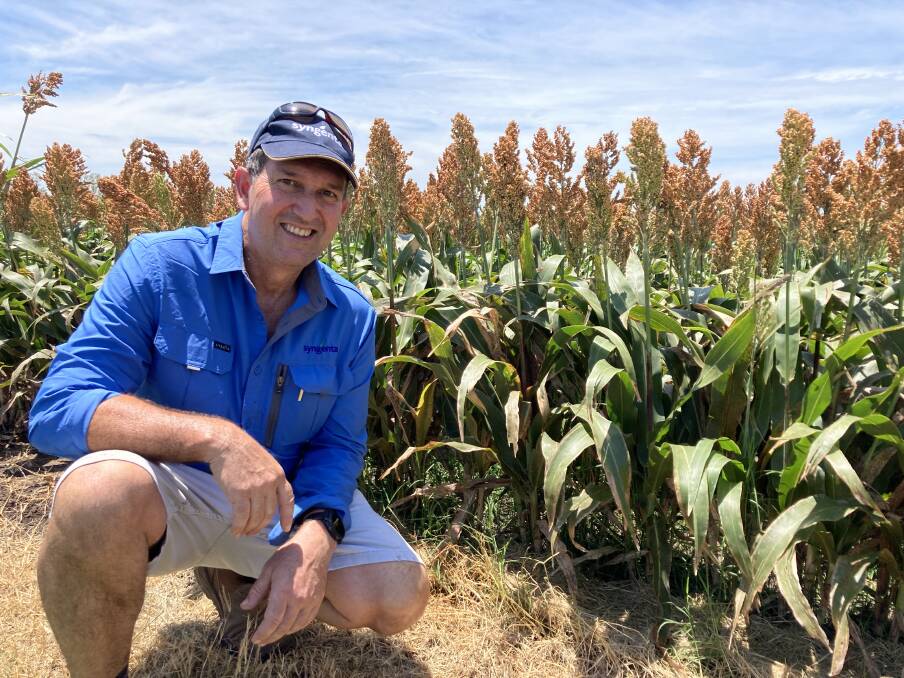
GRASS weeds can flourish in sorghum crops over summer if left untreated, but an old herbicide is standing the test of time.
Subscribe now for unlimited access to all our agricultural news
across the nation
or signup to continue reading
The pre-emergent herbicides, metolacholor and S-metolachlor, have been used in Australia primarily to control grass weeds for more than 40 years.
To date, no instances of resistance to the active ingredient have been documented in Australia and even internationally the few cases of resistance are in broadleaf weeds only.
Syngenta field biology manager Rob Battaglia said some recent changes to the label use patterns and the launch of a new seed safener product would further expand the usefulness of S-metolachlor products, such as Dual Gold and Primextra Gold, in summer crops while protecting sorghum seedlings from herbicide damage.
"S-metolachlor is registered for use in a wide range of crops, including sorghum, maize, sweetcorn, soybean, sunflower and cotton, as well as in fallow situations," Mr Battaglia said.
"The new use patterns in sorghum, cotton and fallow centre on extending application flexibility and residual activity of the herbicide on target weeds."
In sorghum, a rate of one to two litres per hectare can be applied either as a single application before the crop or weeds emerge, or as a split application pre and post-crop emergence (up to six-leaf stage).
Similarly, the full rate can be applied after harvest to establish the fallow, or 1-1.5L/ha can be applied pre-emergent to weeds at fallow establishment followed by 0.5-1L/ha within four weeks.
Growers should be sure to observe replant intervals when planning the next crop.
"There are several factors that affect the length of effective residual activity of S-metolachlor, some of which are outside the grower's control," Mr Battaglia said.
"The product needs to be incorporated and has interactions with rainfall, temperature, soil type, soil organic matter and stubble.
"Having more flexibility in the application timing gives growers the ability to compensate for some of these factors and control new waves of weed germinations for longer."
S-metolachlor is only active on weeds that have not yet emerged and has no effect on weeds that have already emerged from the soil or that do not come in contact with the herbicide as they emerge from the soil.
It is essential to control already-emerged weeds first and then apply the pre-emergent to control subsequent flushes of weed germinations.
"There are some situations where the residual herbicides will appear to be less effective than they should, but this can often be attributed to compromised application timing, limited rainfall and soil conditions, rather than herbicide performance," Mr Battaglia said.
"The difficulty in achieving perfect application timing and incorporation with rainfall is one of the main reasons why the new use patterns for Dual Gold have been registered.
"Pre-emergent herbicides are best used within the WeedSmart Big 6 integrated weed management program and not as a stand-alone control measure."
While other crops listed on the S-metolachlor label can metabolise the herbicide, sorghum requires a seed safener to protect the germinating plants from the herbicidal effects of S-metolachlor.
The new Epivio C seed safener replaces Concept II and provides better overall protection for sorghum seed.
In Syngenta's product development trials in Queensland and New South Wales, an 11 per cent increase in plant stand and a 7pc increase in sorghum yield was measured in crops where the seed was treated with Epivio C compared to Concept II.
Epivio C has also demonstrated improvements in seed safety and shelf-life for carry-over seed.
"Epivio C is applied as a seed treatment and when the seed is planted into moist soil the product is taken up into the plant and improves the metabolism of the herbicide in the seedling, resulting in no crop symptoms," Mr Battaglia said.
"The result is better crop establishment and healthier plants that can better compete against weeds that germinate later in the season."
Want weekly news highlights delivered to your inbox? Sign up to the Farm Weekly newsletter.

